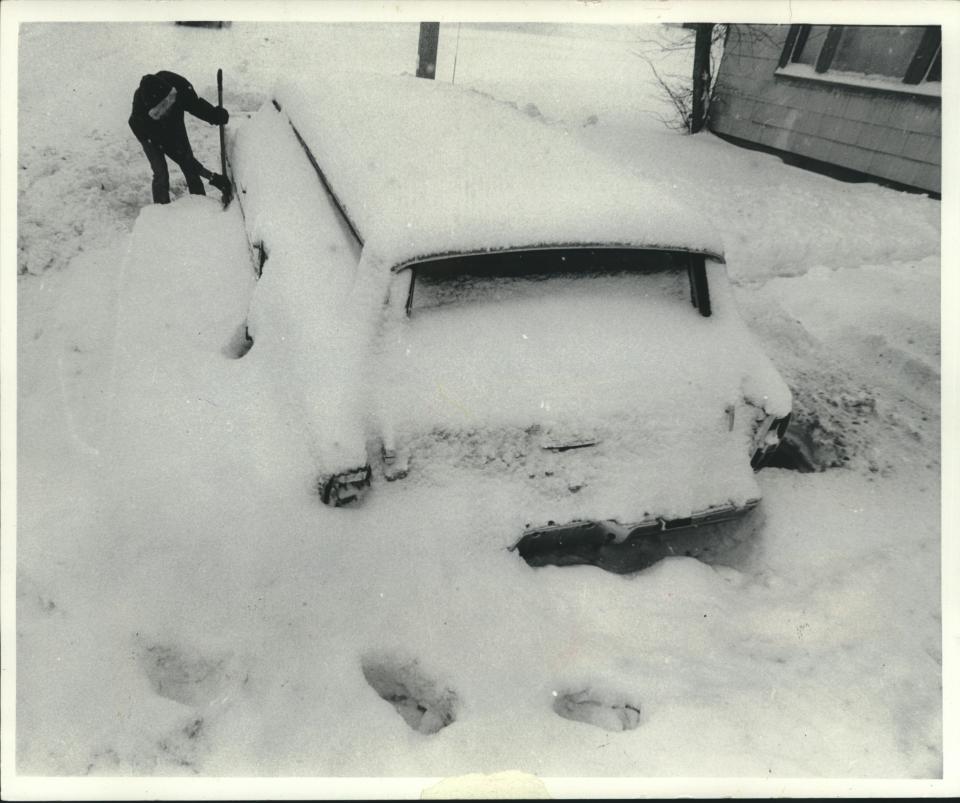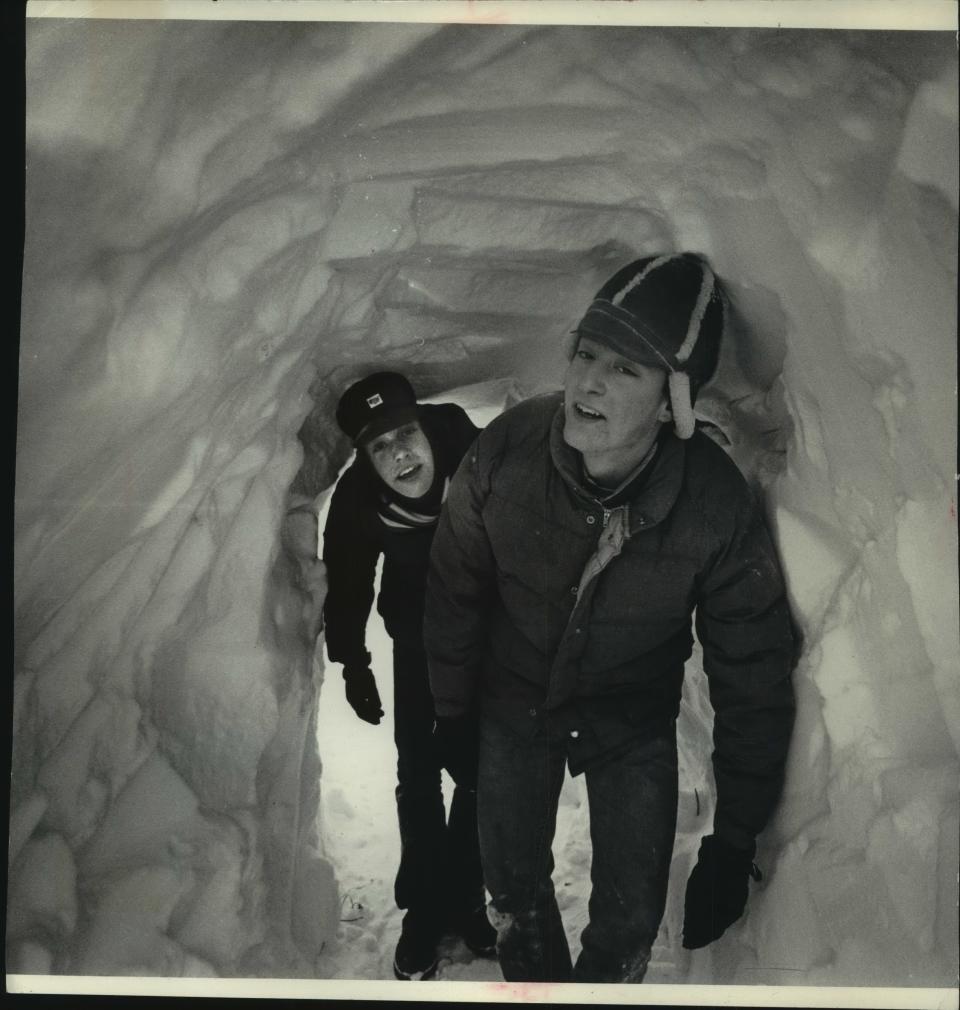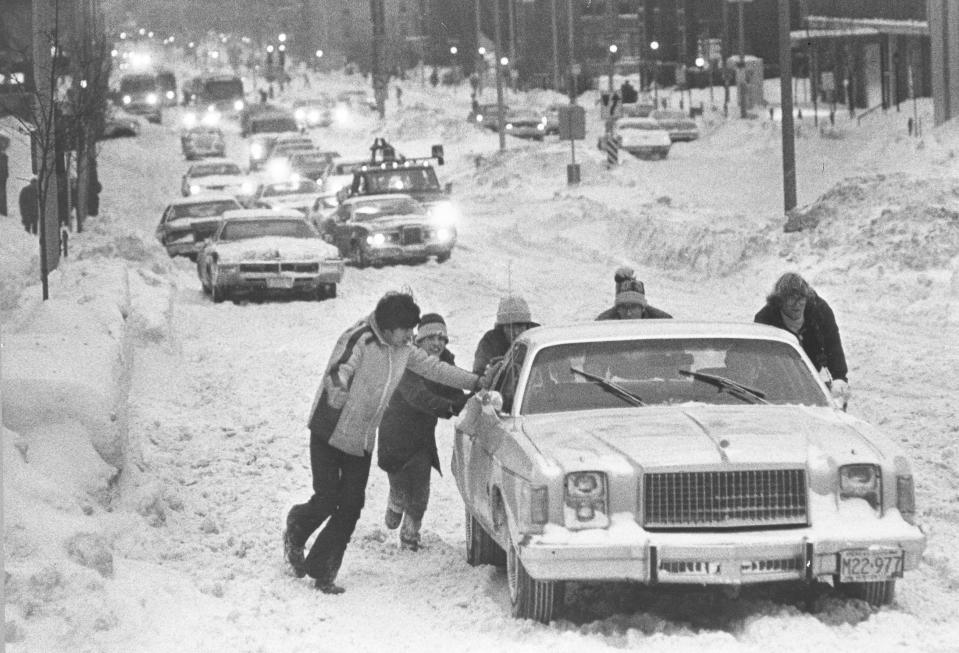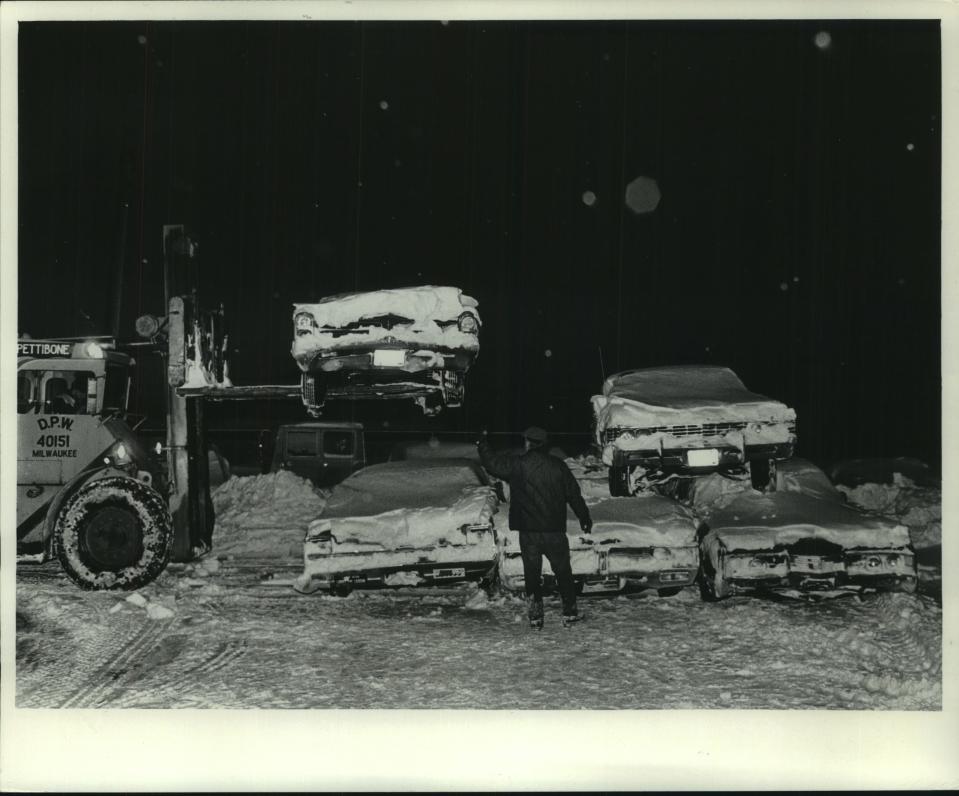14-foot drifts, stacks of cars and 'anarchy': The January in Milwaukee when it never stopped snowing
In January 1979, Milwaukee basically never stopped shoveling — except when temperatures plunged below zero.
"You can almost hear them now, sitting around a warm solar stove in the 21st century, saying: 'Remember the winter of '79?' " Milwaukee Journal writers Ron Elving and Katherine Skiba wrote in a front-page story on Jan. 15, 1979.
And that was only the start. There was plenty more winter to come that month. Here's a look back at that wild January.
Snow piled up and temperatures dropped on New Year's Day
1979 rang in with tons of snow — 13.9 inches of heavy white stuff fell at Mitchell International Airport between 2:30 and 10 p.m. on New Year's Eve, with another inch falling by the morning of New Year's Day.
Flights into Milwaukee were halted, and crews on the runways and roads across the area struggled to keep up with the snow, with monster drifts as high as 14 feet.
Then, temperatures began to fall. By the end of New Year's Day, it was zero — and that was as warm as it got for days, with lows down to 15 below.

The city had recruited shoveling crews, but it was too cold to put them to work safely. With all the cars still on the street, Raymond Caplan, special assistant superintendent of the Bureau of Sanitation, told the Milwaukee Sentinel in a Jan. 3 story that it would be two weeks before parts of the city would be cleared.
Milwaukee didn't have two weeks.
Mid-January storm had Milwaukee running out of room for snow
On Jan. 13-14, a second winter storm smacked the city with another 14.6 inches, closing the airport again and putting road crews on another 24-hour cleanup schedule.
Caplan told the Sentinel in a Jan. 15 story that major roads were mostly clear by late Jan. 14, a Sunday. But the city had a new problem: "We are running out of room to put (the snow)."
Side streets were largely unplowed, in part because plows couldn't navigate around the cars.

And then the bitter cold returned. By 8 a.m. Jan. 15, temperatures had dropped to 15 below zero, and The Milwaukee Journal reported that afternoon that the wind chill was 53 below.
And then it snowed again: Another 4.9 inches of heavy snow fell, with the worst of it during the evening rush hour.
It wasn't pretty.
"Monday's afternoon rush was probably the closest thing to anarchy Milwaukee will ever see," reporter Duane Dudek wrote in a story on the front page of the Jan.16, 1979, Sentinel.
On Jan. 16, Wisconsin Gov. Lee Dreyfus declared a state of emergency for the city of Milwaukee, sending the Wisconsin National Guard to Milwaukee to help dig out.
But before crews could finish digging out, the city had to deal with all the abandoned cars.
Thousands of abandoned vehicles had to be cleared

On Jan. 17, 1979, the Common Council declared a state of emergency — the city's first since the 1967 riot — and gave the public works commissioner the power to impound cars parked illegally under emergency parking rules.
According to a Jan. 17 front-page Journal story by Charles J. Sykes (before he was radio talk show host Charlie Sykes), Public Works Commissioner Herbert Goetsch estimated there were as many as as 3,000 vehicles abandoned on residential streets.
Sixty-six National Guardsmen arrived in the city that night, working with city workers in three shifts to clear as many streets as possible of both snow and cars.
Running out of places to put all the cars, they began stacking them on top of each other, putting "less desirable vehicles on top of each other to make room for still more cars," the Sentinel's Jeff Aiken wrote in a Jan. 20 story.
When asked about the possible public outcry, Louis Miller, superintendent of the Bureau of Municipal Equipment, said: "If they get mad, maybe they will come down here and get their cars so we don't have to keep stacking them anymore."

Just as the National Guard began pulling out of Milwaukee, more snow came.
Snow kept coming, resulting in a record 33.7 inches
From the night of Jan. 23 through the following evening, another 9.5 inches of snow fell on Milwaukee, pushing the area's snow accumulation to a record 33.7 inches.
While the smallest of the three snow blasts to hit the city that month, the last one packed a different kind of wallop.
The unrelentling snow cover had so clogged America's rail lines that some of Milwaukee's largest manufacturers were affected. The Sentinel reported on Jan. 25 that A.O. Smitth laid off about 1,700 workers because of delayed rail shipments of parts and material; other employers followed.
By then, Milwaukee had had it. In a column at the top of the front page of the Jan. 25, 1979, Milwaukee Sentinel, William Janz issued a joking/not-joking proclamation:
" … Be it resolved, that the County of Milwaukee, the City of Milwaukee, all of its suburbs, and any other communities in southeastern Wisconsin that want to affix signatures hereon, do, with snow shovels in hand, officially and unconditionally SURRENDER to the winter of '79 … "
Ready for the weekend? Sign up to learn about the can't-miss events happening in Milwaukee.
This article originally appeared on Milwaukee Journal Sentinel: Milwaukee's 1979 snowstorms makes today's weather look like nothing

